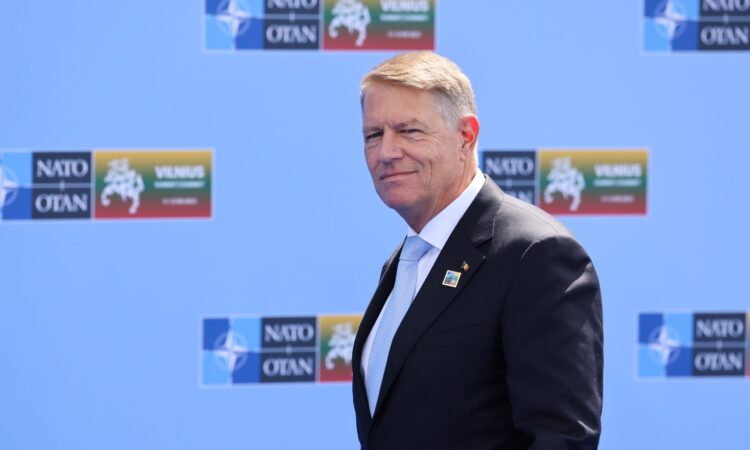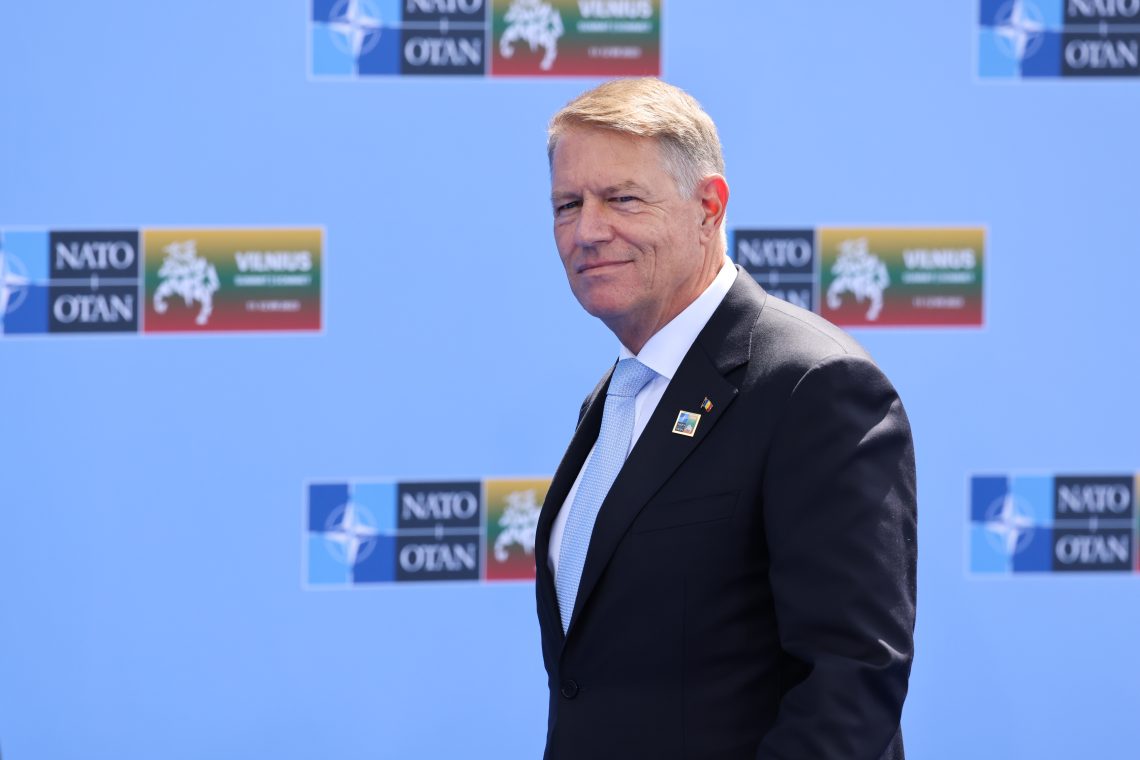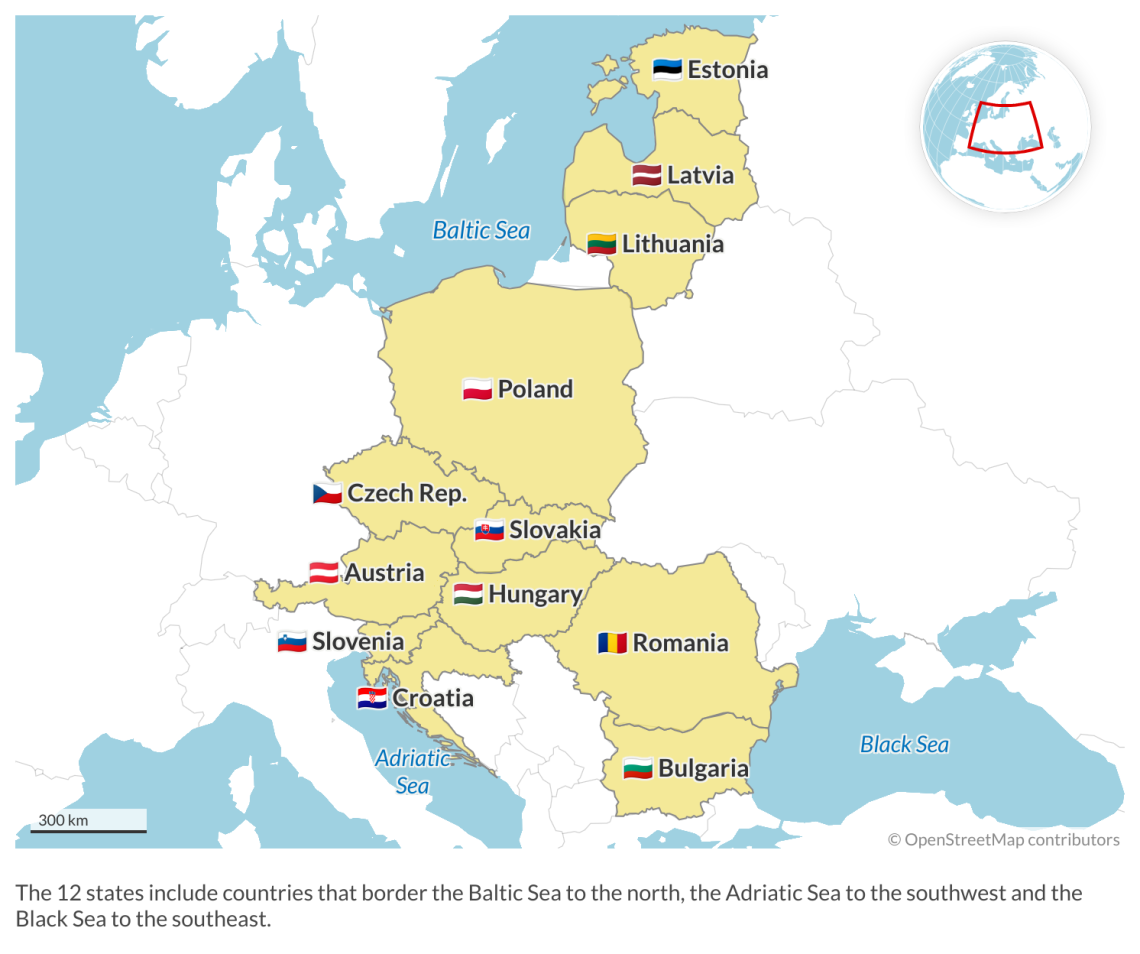
Poland’s October 15 elections may give a boost to the regional development idea that has so far not lived up to its promise.

In a nutshell
- The 12 member nations are likely too divided to agree on major joint investments
- While Poland has been a driving force, Indo-Pacific nations are showing interest
- Ukraine’s postwar reconstruction may give a boost to north-south infrastructure
In 2015, the nations of Central Europe established the Three Seas Initiative (3SI) to boost the development of regional infrastructure, economic activity, digital integration, transportation and energy supplies along a north-south corridor extending from the Baltic states to Southern Europe. Twelve nations have joined the initiative, named for the Baltic, Adriatic and Black Seas.
The project involves annual meetings sponsored by national presidents, a business forum and a development fund for infrastructure, energy or digitalization. There has also been a proposal for a Three Seas Chamber of Commerce. This September, Bucharest, Romania, hosted the most recent annual forum. A candid assessment of the initiative shows progress in some areas and a loss of momentum in others.
An established brand
The greatest accomplishment so far is spotlighting the dramatic need for infrastructure investment along the north-south line and the geopolitical potential of advancing the integration of Eurasian markets.
More than three decades after the collapse of the Soviet bloc, European infrastructure remains primarily east-west oriented with underinvestment in Central Europe. Russia’s war against Ukraine is spurring a reorientation to north-south energy supplies and highlighting the need to redirect Ukrainian grain exports because of the Russian blockade in the Black Sea.
The growing value of the brand was reflected in the latest summit with the addition of Greece as a partner nation, extending the scope of the project deep into Southern Europe. Ukraine and Moldova were also affirmed as partner nations, demonstrating the potential for 3SI to serve as an instrument for expanding European integration and stability.
In addition, the Three Seas Initiative is attracting global attention. There were several Asian delegations at the latest summit, including a 30-member Japanese contingent. In addition, the South Korean embassy in Romania has been active in promoting investment in Central Europe. Seoul has also developed an expansive defense-cooperation relationship with Poland. This reflects how Indo-Pacific powers – including South Korea, Japan, Taiwan and India – see a stable and prosperous Europe both as an economic opportunity and a key strategic relationship in balancing against China. Indeed, it is ironic that as some voices call for disengaging in Europe to focus on China, Asian powers are seeking to engage more in Europe to concentrate on China.
Finally, there is increasing recognition that a strong north-south infrastructure backbone in Europe could be an important enabler for Eurasian integration. It strengthens connections with new NATO member Finland (with Sweden perhaps joining soon), as well as Europe’s access and presence in the Arctic. Through the Black Sea, it connects to the “Middle Corridor” through the Caucasus and Central Asia. From the Black Sea, the region can link the Mediterranean and the Middle East to the Indo-Pacific, Africa and across the Atlantic to the Western Hemisphere. In an age when the value of diversified supply chains and energy supplies is recognized as increasingly important, the concept of knitting these routes together is gaining greater interest.
Facts & figures
Obstacles over opportunity
While the Three Seas Initiative as a geopolitical construct has become a more valuable brand, the implementation appears to be stagnating. There are several reasons for this shortcoming.
Germany remains opposed to the initiative as a competitor to European Union integration and leadership, seeing the undertaking as Poland’s “vanity project,” a reflection of the deep antagonism between the present Polish and German governments. In turn, the United States is ambivalent, most likely in sympathy with Germany. Under U.S. President Donald J. Trump, America pledged to invest a billion dollars in the initiative. That investment never materialized.
Much of the interest in the Three Seas Initiative was seen as an alternative to China’s Belt and Road Initiative (BRI). However, China’s penetration and investment in Central Europe have been modest. Further, China is less popular because of Beijing’s support for Russia’s war against Ukraine. While the big marquee China initiatives, like the BRI, look moribund in Europe, China is in stealth mode, looking quietly for gaps and leverage to penetrate Europe. For instance, even though the Romanian parliament voted to keep Huawei out of Romania, the Chinese just secured a backdoor from Bucharest to let another Chinese company enter the telecom market. There will be a strong and likely successful effort to kill this move. Major Chinese investments are more a consequence of doing business with Germany. For instance, Hungary will host a Chinese battery factory because it is paired with a German automotive assembly plant. Still, not having to compete with the BRI robs some of the urgency of the Three Seas Initiative.
The lack of regional consensus is also a challenge. There is almost no regional bloc in Central Europe that is not under tension for one reason or another. The Visegrad Group, for instance, is divided and barely functioning. Hungary is at odds with Poland over support for Ukraine. Greece brings additional challenges. Athens has a difficult relationship with Ankara, while several Three Seas Initiative nations, including Romania and Hungary, have good ties to Turkey. Turkey’s support would be valuable not only to attract private investment but also for assistance in the Black Sea and connecting to the Middle Corridor (the Caucasus and Central Asia). Growing the initiative, while essential for geopolitical buy-in and expanding regional integration, makes achieving broad political alignment more difficult. There is little likelihood all the countries involved can unite politically behind major projects.
Russia continues to see any Three Seas Initiative success as an obstacle to the expansion of its power in Europe and its efforts to weaken European integration. The Kremlin is spending money to undermine the project. Russia’s war against Ukraine has also been an important factor, becoming an all-consuming issue for much of the region. It also increases investment risk in Central Europe.
Perhaps the biggest source of friction slowing the 3SI momentum, however, is the leadership of Poland, which has been its driving force. Polish elections will take place on October 15. The opposition is more friendly toward Germany and so may put the initiative on the back burner if it wins. However, since the initiative is a pet project of the current government, it will likely receive new attention if the ruling party prevails.
After the war in Ukraine
Ukraine’s reconstruction could well be a boon to the initiative. Neighboring countries are all part of 3SI and presumably will be involved with Ukrainian companies and taking part in reconstruction projects. Demand for better regional infrastructure and integration will increase. Ukraine’s rebuilding is likely to attract more foreign direct investment to the region. The Three Seas Initiative could be one vehicle for the reconstruction project, joined by Indo-Pacific and Middle East nations.
Scenarios
More likely: 3SI will get renewed momentum
The most likely scenario is that the present Polish government coalition will survive national elections and Warsaw will press ahead with the project. If a more prominent conservative coalition emerges in the European Parliament after elections next year, there might be stronger voices supporting 3SI in Brussels. Another source to potentially restore momentum is advocacy in the Group of Seven nations, particularly if Italy takes an interest. The future attitudes of the U.S. and Germany are wild cards and could well turn on the next elections in both countries.
3SI will survive as a political project, though it is unclear whether it will ever muster the capital investment needed to drive truly transformative infrastructure projects.
Whether the initiative’s infrastructure hopes are successful or not, the concept and the brand will still have relevance.
Less likely: 3SI’s failure will force the search for alternative investment
It the project fails, which is less likely, partners will be looking for alternative ways to bring private investment into Northern, Central and Southern Europe. Ukraine’s postwar reconstruction might be one vehicle.








